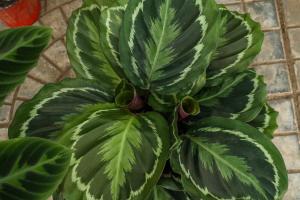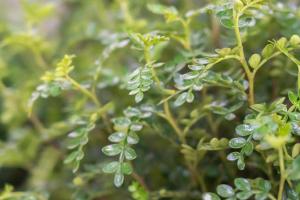Introduction
Winter brings with it freezing temperatures that can damage plants, especially those grown in pots outside. When the mercury drops, many garden lovers wonder whether to protect their potted plants by bringing them inside. In this article, we explore whether you should bring potted plants inside during a freeze.
The Risks of Freezing Temperatures on Potted Plants
Potted plants are more vulnerable to extreme weather conditions than those grown in the ground. Freezing temperatures can damage the roots, leaves, stems, and flowers of potted plants. Ice formation around the roots of plants makes it difficult for them to absorb water, which leads to dehydration and ultimately to death. Moreover, potted plants are more exposed to temperature changes compared to those grown in the ground, which makes them more susceptible to frost damage.
Which Potted Plants Can Survive a Freeze?
While many potted plants are susceptible to freezing temperatures, some can tolerate them better than others. Some of the plants that can withstand freezing temperatures include:
Hellebores
Bulbs (such as tulips and daffodils) that haven't flowered yet
Succulents (such as cacti and jade plants)
Evergreens (such as pine and cedar trees)
However, even plants that can survive a freeze may suffer some damage, especially if the freeze is prolonged or the temperature drops too low.
Should You Bring Potted Plants Inside During a Freeze?
Whether you should bring potted plants inside during a freeze depends on several factors, including the type of plant, the severity of the freeze, and the availability of indoor space.
If the temperature is expected to drop below 32°F (0°C) or if there is a risk of frost, it's best to bring your potted plants inside. Place them in a well-lit area away from drafts and heat sources. Avoid placing them too close to a window or a door that is frequently opened and closed, as that can expose them to sudden temperature changes. Remember to water your plants regularly, as indoor heating can dry out the air and affect their moisture needs.
If you cannot bring your plants inside, there are a few things you can do to protect them. For instance, you can cover them with a frost blanket or a tarp to insulate them from the cold. Alternatively, you can move them to a sheltered area, such as a covered porch or a garage.
Conclusion
Potted plants are more vulnerable to freezing temperatures than those grown in the ground. While some plants can survive a freeze, it's best to bring your potted plants inside if the temperature is expected to drop below 32°F (0°C) or if there is a risk of frost. If you cannot bring your plants inside, you can protect them by covering them or moving them to a sheltered area. Remember to water your plants regularly, as indoor heating can affect their moisture needs. By taking these measures, you can help your potted plants survive the harsh winter temperatures.

 how many times do yo...
how many times do yo... how many planted tre...
how many planted tre... how many pine trees ...
how many pine trees ... how many pecan trees...
how many pecan trees... how many plants comp...
how many plants comp... how many plants can ...
how many plants can ... how many plants and ...
how many plants and ... how many pepper plan...
how many pepper plan...
































